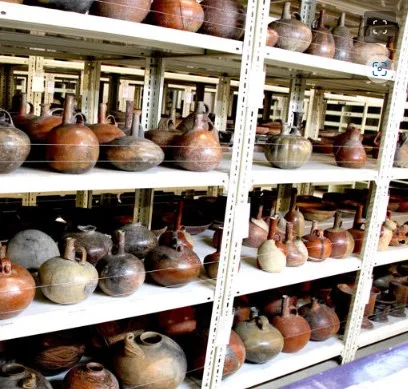Archaeologists trace the history chocolate to the Amazon jungle more than 5,000 years ago
By Robyn White
Archaeologists have shed light on the origins of chocolate by tracing the spread of the cacao tree.
A new study published in Scientific Reports found that the cacao tree, which grows cocoa beans, seems to have begun spreading from the Amazon to other regions at least 5,000 years ago via human migration and trading routes.

Archeological pots from the Amazon and Andean regions of South America show strains of the cacao plant, the basis for chocolate.
“Humans have a long history of transporting and trading plants, contributing to the evolution of domesticated plants,” the authors wrote in the study. “Theobroma cacao originated in the Neotropics from South America. However, little is known about its domestication and use in these regions.”
Claire Lanaud and colleagues took a close look at the residues from 352 ceramic pots from 5,900 to 400 years ago found in Ecuador, Colombia, Peru, Mexico, Belize and Panama.
When they tested for ancient cacao DNA they found three strains. From this they could research how the strains were bred and shared across cultures. And it seems that the cocoa bean was more widely shared between different cultures than scientists thought.
Chocolate is, of course, a widely consumed treat all around the world. And the cacao tree found today remains one of the globe’s most important plants. Its scientific name, theobroma cacao, even means “the food of the gods.”
However, the cacao tree faces a number of threats, such as disease and climate change, but the study reports that knowing more about its genetic history and diversity will help scientists address these.
The new findings suggest that after it was domesticated in the Amazon 5,000 years ago, it quickly spread along the Pacific Coast. Before now, details of its spread were not known, neither was its use in various cultures.
The findings also give fresh insight into the different strains of the plant and how they diversified.
There are 11 different strains of the plant. Throughout this research, scientists found “high levels of diversity among the ancient strains” which suggests that different populations were bred together.
“We observed that strong genetic mixing between geographically distant cacao populations occurred as early as the middle Holocene, in South America, driven by humans, favoring the adaptation of T. cacao to new environments,” the authors write.
The middle Holocene dates to approximately 4,000 to 6,000 years ago.
“This complex history of cacao domestication is the basis of today’s cacao tree populations and its knowledge can help us better manage their genetic resources,” the authors say.
________________
Credit: MSN






















